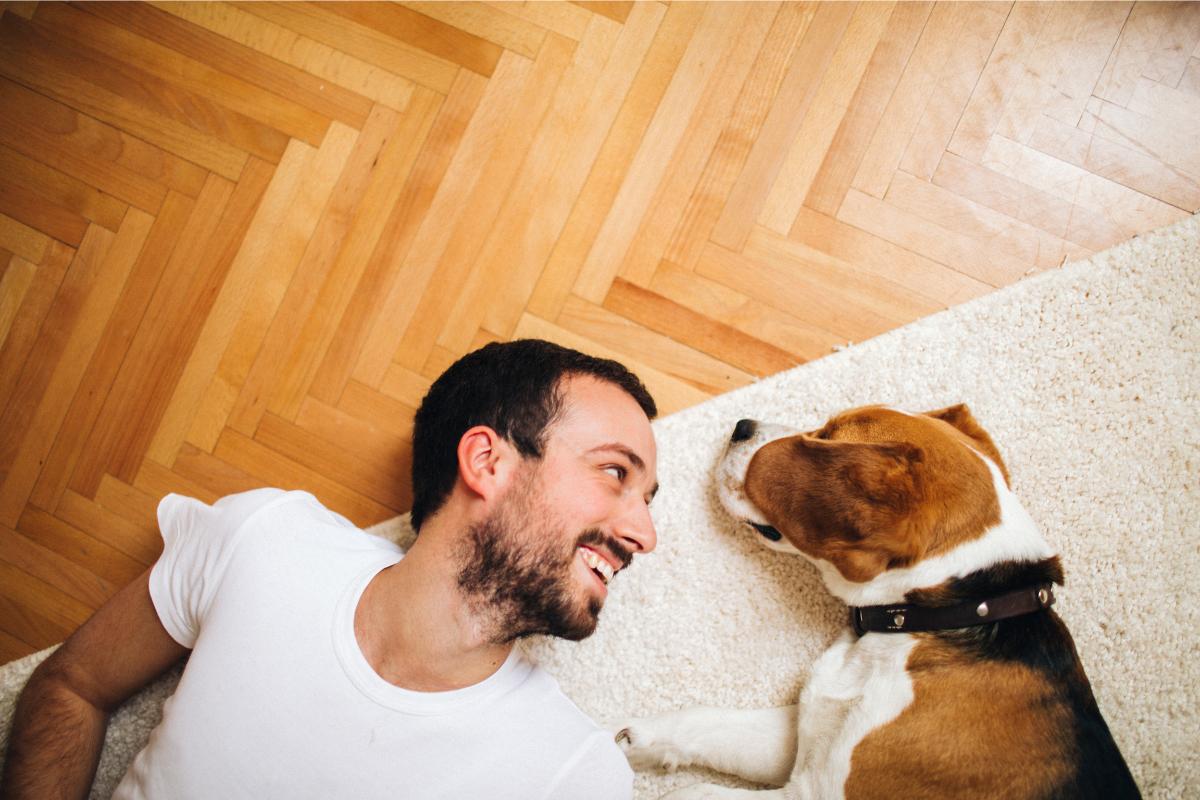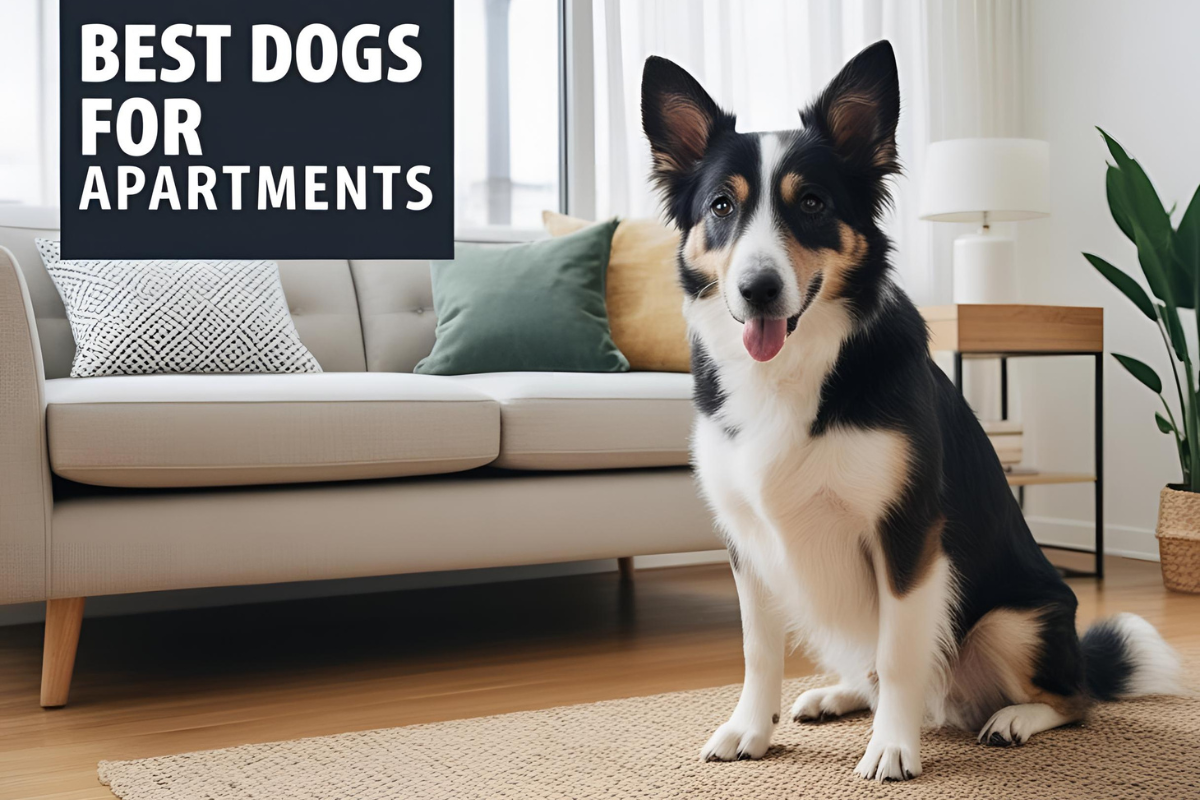Finding the perfect four-legged roommate for your apartment requires more thought than picking a dog based on cuteness alone. Urban living presents unique challenges: limited space, close neighbors, and often restrictive pet policies. The good news? Many dog breeds thrive in apartments when matched with the right owner.
Successful apartment dog ownership comes down to understanding your space limitations and choosing a breed that fits your lifestyle. The best apartment dogs share common traits: they’re adaptable to small spaces, have manageable exercise needs, and won’t disturb your neighbors with excessive barking.
Size doesn’t always determine suitability—some large breeds make surprisingly good apartment companions, while certain small dogs might drive your neighbors crazy with constant yapping. The key lies in temperament, energy levels, and care requirements.
French Bulldog: The Ultimate Low-Maintenance Apartment Companion
French Bulldogs consistently rank as the top choice for apartment living, and it’s easy to see why. These compact, muscular dogs typically weigh between 20-28 pounds, making them perfectly sized for smaller living spaces without being fragile underfoot.
What sets French Bulldogs apart is their remarkably low energy levels. While most dogs need extensive daily exercise, Frenchies are content with short walks and indoor play sessions. They’re natural couch potatoes who prefer lounging beside you rather than demanding hours of outdoor activity. This makes them ideal for busy urban professionals or anyone with a less active lifestyle.
Their quiet nature is perhaps their greatest apartment asset. French Bulldogs rarely bark unnecessarily, which means peaceful relationships with neighbors and no noise complaints from building management. When they do vocalize, it’s usually for good reason—like alerting you to visitors or expressing excitement.
Grooming requirements are refreshingly simple. Their short, smooth coat needs only weekly brushing, and they don’t shed excessively compared to many other breeds. However, their flat faces require some special attention—they can overheat easily, so apartment temperature control becomes important during hot weather.
French Bulldogs are also remarkably social and adaptable. They typically get along well with other pets and people, making elevator rides and hallway encounters stress-free. Their sturdy build means they can handle the occasional accidental bump in tight spaces without injury.
Boston Terrier: Small Space, Big Personality
Boston Terriers earn their reputation as excellent apartment dogs through their perfect balance of friendliness and manageability. Weighing 12-25 pounds, they’re small enough for any apartment yet robust enough to handle urban living’s daily challenges.
These “American Gentlemen” are naturally well-behaved indoors. Unlike many terrier breeds known for high energy and stubbornness, Boston Terriers are surprisingly calm and easy-going. They’re content with moderate exercise—a daily walk and some indoor playtime typically meets their needs completely.
Their short, fine coat makes grooming virtually effortless. A quick weekly brush keeps them looking sharp, and they don’t shed heavily enough to overwhelm your vacuum cleaner or trigger serious allergies. This low-maintenance grooming routine is perfect for apartment dwellers who want a well-groomed dog without frequent professional grooming expenses.
Boston Terriers are also highly trainable and eager to please. This makes apartment-specific training—like not barking at hallway noises or waiting patiently for elevator rides—much easier to accomplish. Their intelligence helps them quickly understand apartment living rules and boundaries.
Perhaps most importantly for apartment living, Boston Terriers are naturally quiet dogs. They bark occasionally but not excessively, and they’re easily trained to control their vocalizations. Their friendly disposition means they’re more likely to greet neighbors with tail wags than territorial barking.
Other Excellent Apartment Dog Options
While French Bulldogs and Boston Terriers top many lists, several other breeds deserve consideration for apartment living.
Cavalier King Charles Spaniels bring royal elegance to small spaces. These gentle, adaptable dogs are slightly larger than Boston Terriers but maintain the same easy-going temperament that works well in apartments. They’re particularly good for families with children due to their patient, friendly nature.
Pugs offer another low-energy option with maximum personality. Like French Bulldogs, they’re content with minimal exercise and prefer indoor relaxation. Their wrinkled faces require some extra cleaning attention, but their overall care requirements remain manageable.
Chihuahuas prove that the smallest packages can make the biggest impact. These tiny dogs can meet most of their exercise needs indoors, making them perfect for studio apartments or during harsh weather. However, they require early socialization and training to prevent excessive barking.
For those considering larger breeds, Greyhounds might surprise you. Despite their racing background, they’re famously lazy indoors and need less exercise than many smaller breeds. Their calm, gentle nature makes them excellent apartment roommates, provided your building allows larger dogs.

Making the Right Choice for Your Apartment Life
The best apartment dogs share three crucial characteristics: they remain quiet enough to keep peace with neighbors, require manageable amounts of exercise that fit urban schedules, and adapt easily to limited living space.
Before bringing any dog home, research your building’s pet policies thoroughly. Some apartments have breed restrictions, weight limits, or additional pet deposits. Consider your daily schedule, exercise preferences, and long-term housing plans.
Remember that even low-energy dogs need mental stimulation and social interaction. Puzzle toys, training sessions, and regular socialization help prevent destructive behaviors that could jeopardize your housing situation.
The right apartment dog becomes more than a pet—they become the perfect urban companion who enhances your city living experience rather than complicating it.
FAQ: Best Dogs for Apartments
1. What makes a dog breed suitable for apartment living?
Apartment-friendly dog breeds are typically low-energy, quiet, and adaptable to smaller living spaces. They tend to have calm temperaments and require less outdoor exercise compared to high-energy breeds, making them ideal for urban environments.
2. Are large dogs suitable for apartments?
Yes, some large breeds, like Greyhounds, can thrive in apartments due to their calm demeanor and low activity levels indoors. It’s important to provide them with regular outdoor walks and exercise, regardless of their size.
3. How do I prevent my dog from barking excessively in an apartment?
Training, socialization, and providing mental stimulation through toys or puzzles can help reduce excessive barking. Choosing a naturally quiet breed, such as a Shih Tzu or Cavalier King Charles Spaniel, can also make a difference.
4. Can high-energy dogs adapt to apartment living?
High-energy dogs can adapt to apartment living if their exercise and mental stimulation needs are met. Daily walks, playtime, and enrichment activities are essential to ensure their overall well-being in confined spaces.
5. What are some low-maintenance dogs for apartments?
Low-maintenance apartment dogs include breeds like the French Bulldog, Boston Terrier, and Pug. These breeds typically require minimal grooming and are low-energy, making them perfect for busy owners in urban settings.









